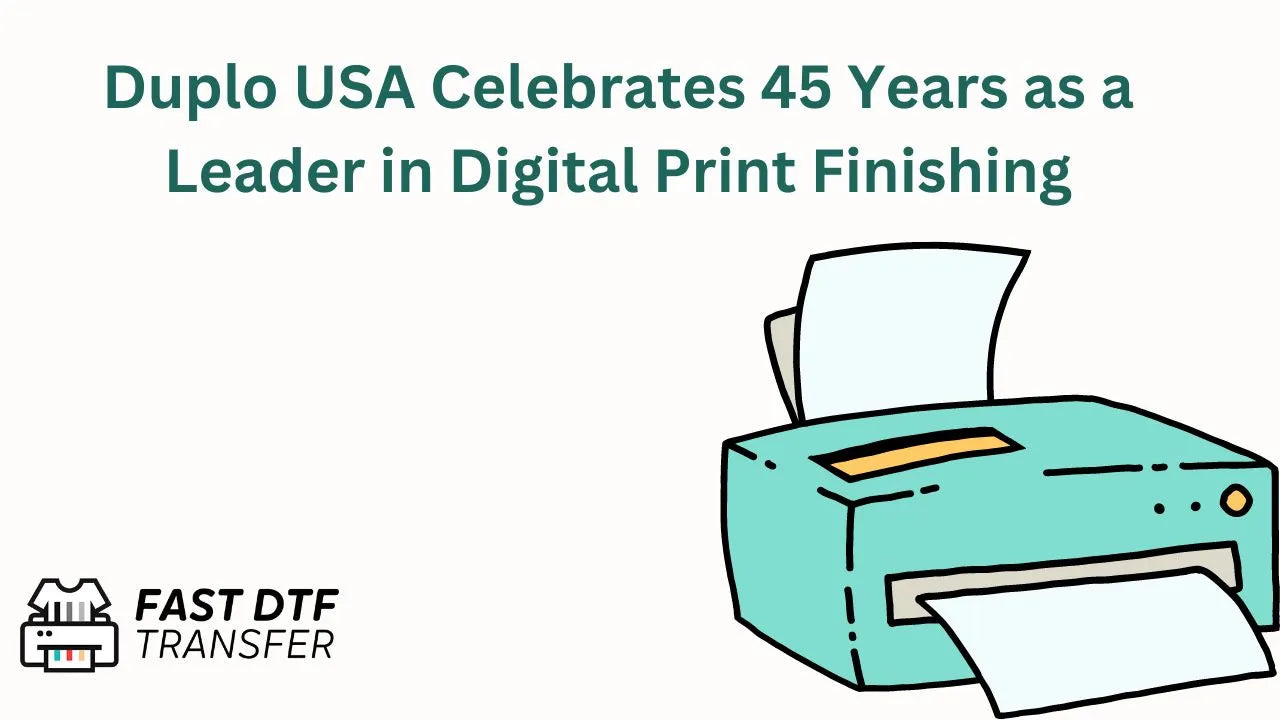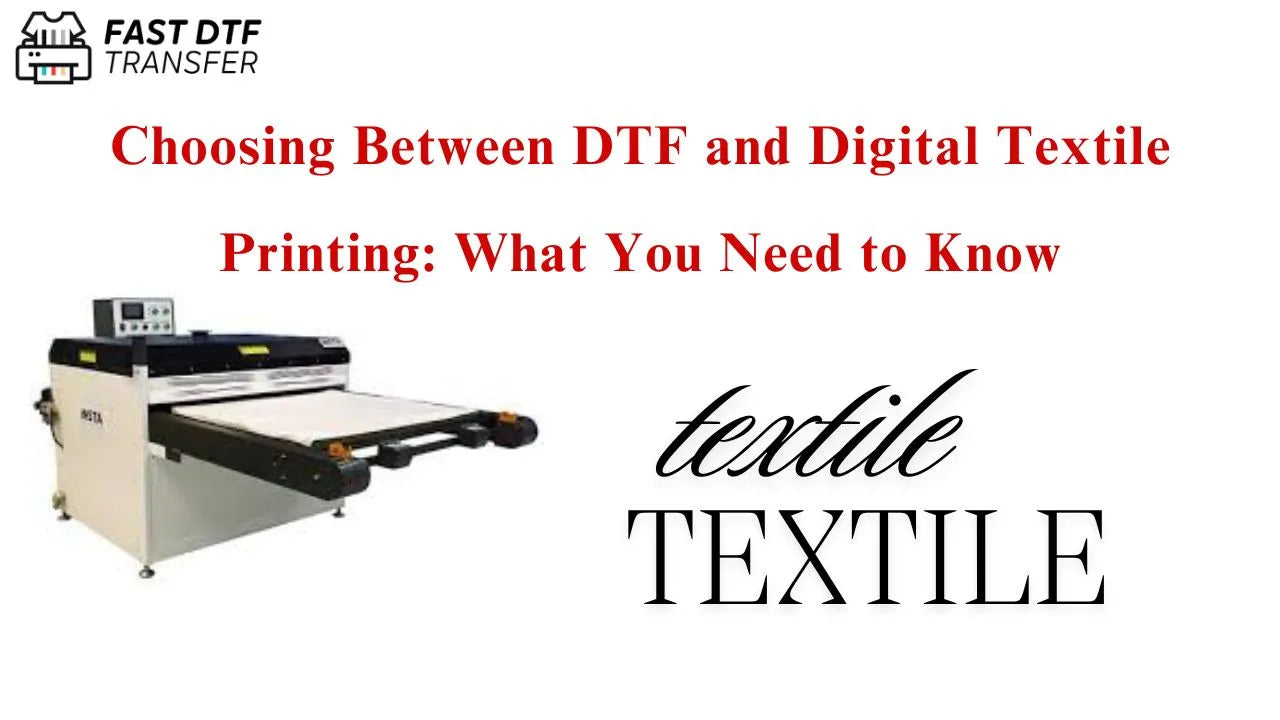
Breakthrough in DTF Printing Technology Unveiled at International Print Expo 2024
Breakthrough in DTF Printing Technology Unveiled at International Print Expo 2024
Printing technology continues to evolve rapidly, and the International Print Expo 2024 has revealed a major breakthrough in Direct-to-Film (DTF) printing. Known for its versatility and high-quality results, DTF printing is now more efficient, faster, and sustainable.
What is DTF Printing?
DTF printing transfers designs onto a special film, which is then applied to fabrics or other materials. This method has gained popularity for printing on garments, accessories, and promotional products. At the expo, new advancements promise even better speed, quality, and sustainability in DTF printing.
Key Breakthroughs in DTF Printing Technology
Several innovations were unveiled at the expo that are set to elevate DTF printing technology across the industry.
1. Enhanced Speed and Efficiency
The latest technology has significantly increased printing speeds. Businesses can now print more designs in less time without sacrificing quality. This makes DTF printing ideal for high-volume businesses, reducing turnaround times and increasing profitability.
2. Superior Print Quality
New ink formulations and printing heads deliver more vibrant, precise colors, and sharper details. The prints are long-lasting, resistant to fading, and offer better color intensity, making them perfect for intricate designs and a wider variety of fabrics.
3. Eco-Friendly Advancements
Sustainability is a key focus, with printers now designed to reduce energy consumption. Biodegradable transfer films and eco-friendly inks further lower environmental impact. These improvements help businesses appeal to eco-conscious consumers while reducing their carbon footprint.
4. Versatility and Material Compatibility
The latest DTF printers can now print on a broader range of materials, including textiles, leather, wood, and even some metals. This expanded material compatibility opens up new opportunities for businesses to diversify their offerings and cater to various industries.
5. Automation and Streamlined Workflow
Automated systems for pre-treatment, ink management, and curing processes streamline the entire printing workflow. These advancements reduce manual labor, minimize errors, and boost production speed and efficiency.
Benefits for Print Businesses
The new DTF printing advancements offer several benefits for businesses:
- Increased Efficiency: Faster speeds and automation help businesses meet high-demand orders quickly.
- Cost Savings: Reduced labor and waste result in lower operational costs.
- Better Products: Higher quality prints and eco-friendly practices attract more customers.
- New Markets: Increased material compatibility opens opportunities for new products and services.
The Future of DTF Printing
The innovations at the International Print Expo 2024 have set the stage for an exciting future for DTF printing. As businesses adopt these advancements, we can expect even faster, higher-quality, and more sustainable solutions. Further automation, smarter printing systems, and sustainability innovations will continue to shape the future of DTF printing.
Conclusion
The breakthroughs in DTF printing technology unveiled at the International Print Expo 2024 mark a significant milestone for the print industry. Faster speeds, improved quality, and eco-friendly practices make DTF printing a crucial technology for businesses looking to stay ahead in the growing market for custom, sustainable products.
1. What is Direct-to-Film (DTF) Printing?
Direct-to-Film (DTF) printing is a modern method where designs are printed onto a special film that is then transferred onto fabrics or other materials. Unlike traditional screen printing, DTF printing allows for vibrant colors and detailed prints on various surfaces, including garments, textiles, and promotional products.
2. How does DTF printing work?
DTF printing involves printing a design onto a special PET film using water-based inks. The printed film is then coated with an adhesive powder, which is melted onto the design. The film is then applied to the desired substrate (such as a fabric or garment) using heat, transferring the design onto the material.
3. What are the advantages of DTF printing over other methods?
DTF printing offers several advantages:
- High-Quality Prints: Produces vibrant, detailed, and durable prints.
- Versatility: Can print on a wide range of materials, including fabrics, wood, metal, and more.
- Cost-Effective: Ideal for small to medium print runs, with less material waste compared to other methods.
- No Need for Pre-Treatment: Unlike Direct-to-Garment (DTG) printing, DTF doesn't require pre-treatment of fabrics, saving time and costs.
4. What materials can be used with DTF printing?
DTF printing can be used on a variety of materials, including:
- Textiles: Cotton, polyester, blends, and more.
- Hard Surfaces: Wood, metal, leather, and certain plastics.
- Fabrics: Ideal for garments like t-shirts, hoodies, and sportswear, but also works on bags and accessories.
5. Is DTF printing eco-friendly?
Yes, DTF printing can be eco-friendly. It uses water-based inks, which are less harmful than solvent-based inks. Additionally, DTF printing has a lower environmental impact than other methods like screen printing, which often requires large quantities of water and chemicals. However, businesses can further reduce environmental impact by choosing biodegradable films and eco-friendly transfer adhesives.
6. Can DTF printing handle small orders and custom designs?
Yes, DTF printing is excellent for small orders and custom designs. The process is flexible and cost-effective for short runs, making it a great choice for small businesses or custom print shops. Unlike traditional screen printing, DTF printing does not require setup fees or complex processes for each design, which is ideal for custom or one-off prints.
7. What are the benefits of DTF printing for businesses?
The key benefits for businesses include:
- Fast Turnaround: DTF printing offers quick printing speeds, making it suitable for urgent orders.
- Cost-Effective: No need for screens, stencils, or extensive setup, which reduces upfront costs.
- High-Quality Prints: Ideal for complex and colorful designs, DTF ensures durable and vibrant results.
- Increased Versatility: DTF can be used on a variety of materials, expanding product offerings for businesses.
8. What kind of maintenance does DTF printing require?
DTF printing systems generally require regular maintenance to ensure optimal performance. This includes cleaning the printer heads to prevent ink buildup, checking for blockages in the system, and keeping the film and transfer powder clean. Routine checks and keeping the equipment in good condition will help avoid errors and downtime.
9. How long do DTF prints last?
DTF prints are known for their durability. When applied correctly, prints can last for many washes without fading or cracking, especially when using high-quality inks and adhesive powders. The prints are resistant to peeling and offer excellent washability, making them ideal for garments and other items that undergo frequent use.
10. Can DTF printing be used for large-scale production?
Yes, DTF printing can be scaled for large production runs. With the latest advancements in DTF technology, high-speed printers have made it possible to use DTF printing for large orders while maintaining quality. However, for extremely high-volume production, other methods like screen printing might be more efficient, depending on the specifics of the job.

